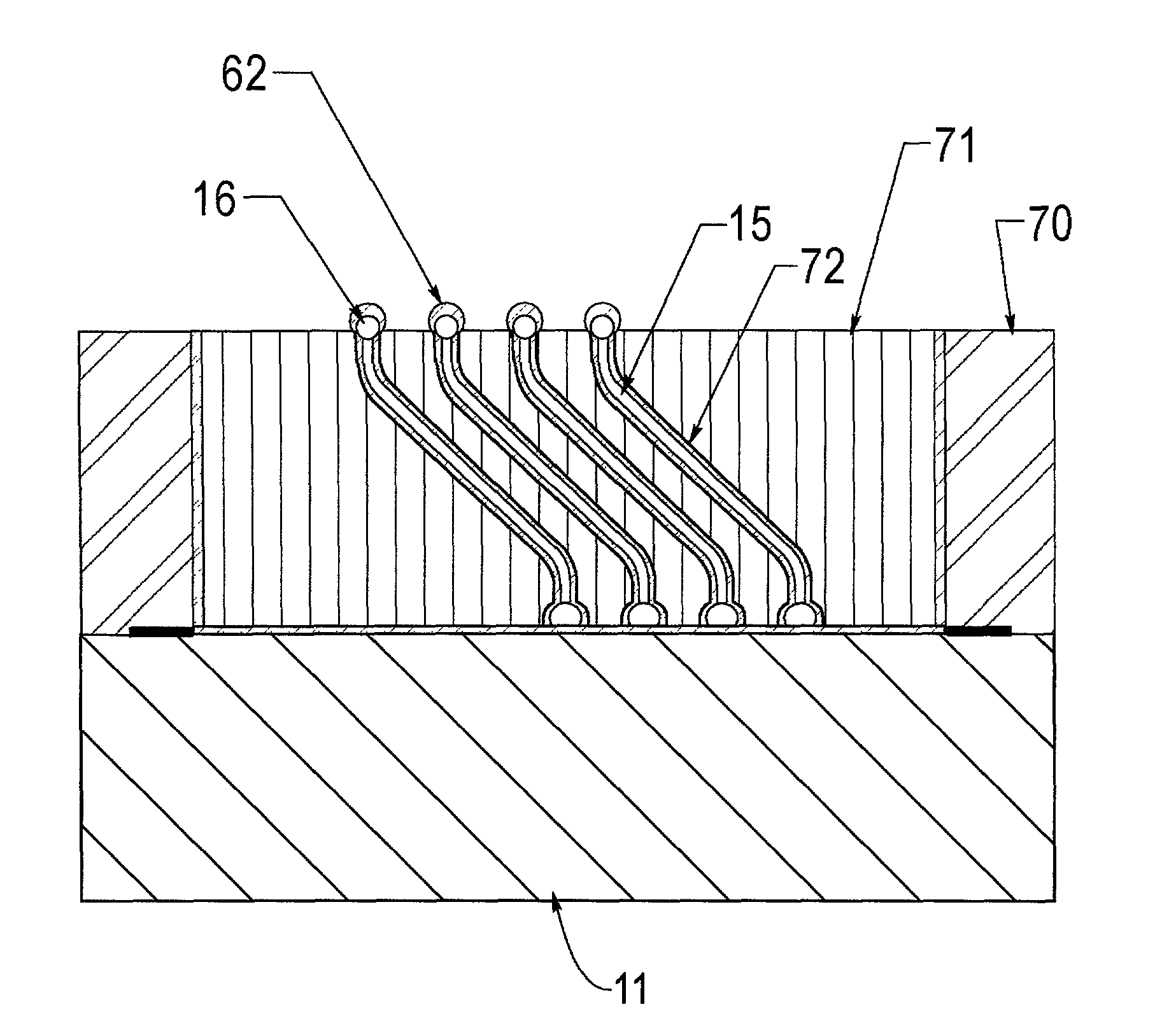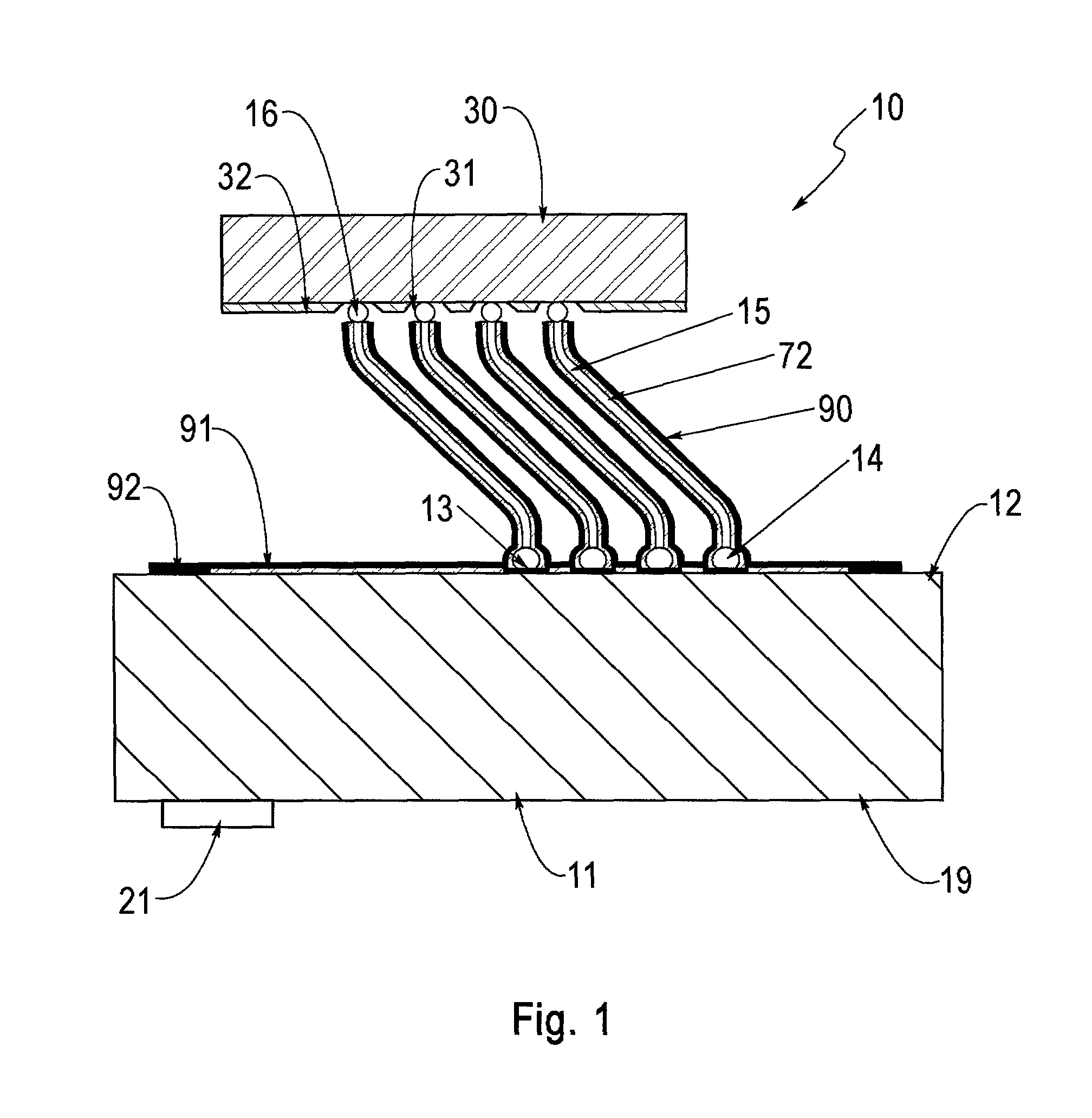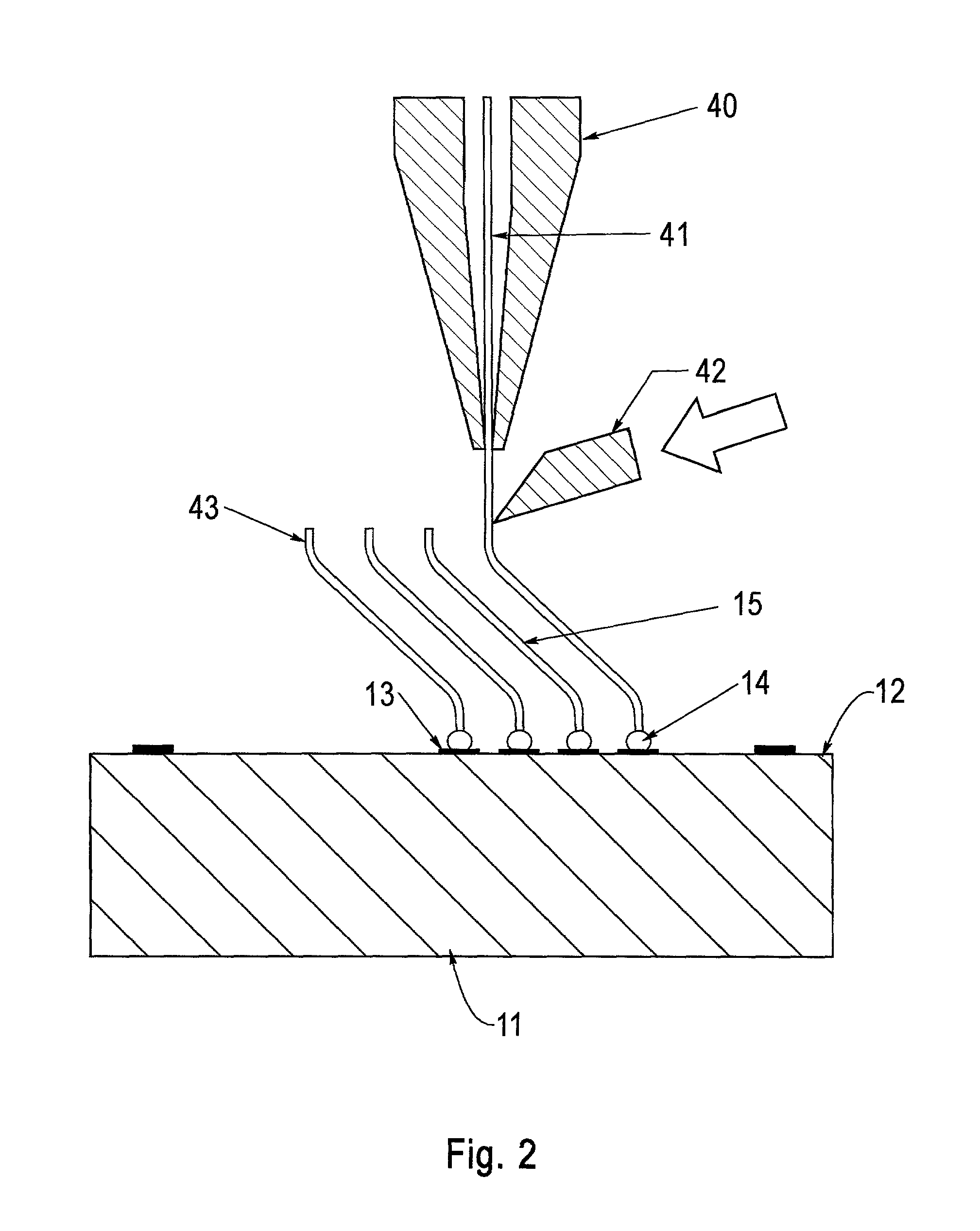Electrodeposition method of forming a probe structure having a plurality of discrete insulated probe tips projecting from a support surface
a technology of discrete insulated elongated electrical conductors and electrodeposition methods, which is applied in the direction of liquid/fluent solid measurement, fluid pressure measurement, peptides, etc., can solve the problems of easy deformation or damage of probe wires, high cost of fabricating contemporary probes for testing integrated circuits, and relatively high cost of pin grid array packages. , to achieve the effect of reducing the length of electrical conductors
- Summary
- Abstract
- Description
- Claims
- Application Information
AI Technical Summary
Benefits of technology
Problems solved by technology
Method used
Image
Examples
Embodiment Construction
[0041]FIG. 1 shows a cross section of a test substrate (11) and a high performance test probe (10) according to the present invention. The test substrate (11) provides a rigid base for attachment of the probes (10) and fan out wiring from the high density array of probe contacts to a larger grid of pins or other interconnection means to the equipment used to electrically test the integrated circuit device. The fan out substrate can be made from various materials and constructions including single and multi-layer ceramic with thick or thin film wiring, silicon wafer with thin film wiring, and epoxy glass laminate construction with high density copper wiring. The test probes (10) are attached to the first surface (12) of the substrate (11). The probes are used to electrically contact the aluminum bond pads (31) on the device (30) which is being tested. The device (30) under test, is preferably an IC chip. The bond pads (31) which are typically aluminum are typically recessed slightly ...
PUM
| Property | Measurement | Unit |
|---|---|---|
| electrical | aaaaa | aaaaa |
| reduction potential | aaaaa | aaaaa |
| electrical bias | aaaaa | aaaaa |
Abstract
Description
Claims
Application Information
 Login to View More
Login to View More - R&D
- Intellectual Property
- Life Sciences
- Materials
- Tech Scout
- Unparalleled Data Quality
- Higher Quality Content
- 60% Fewer Hallucinations
Browse by: Latest US Patents, China's latest patents, Technical Efficacy Thesaurus, Application Domain, Technology Topic, Popular Technical Reports.
© 2025 PatSnap. All rights reserved.Legal|Privacy policy|Modern Slavery Act Transparency Statement|Sitemap|About US| Contact US: help@patsnap.com



